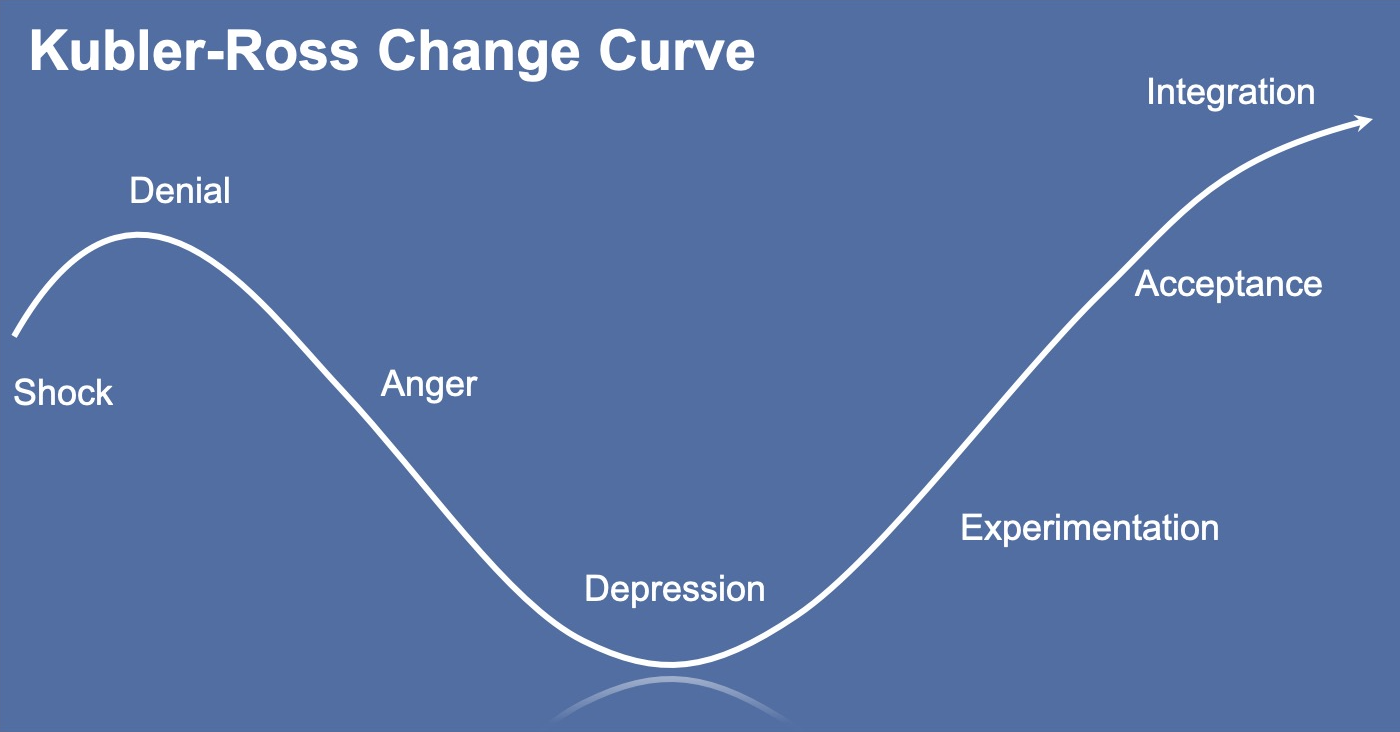‘– Click to read Part 1 (Engaging Leadership Partners Into The Imperative Of Change) here —
In this series of articles, we are discussing engagement as a facet of change management that hinders most of the leaders that we work with. In our latest article (Part 2 of 3), we discuss how to build positive engagement with mid-level management to participate in leading the change, represent its imperative with the teams, support individuals through times of uncertainty and critically, ensure business continuity. This group of individuals lead and influence 80%+ of organisations and so having them ‘on side’ is not only a plus, but fundamental to conducting change successfully.
Learnings from the battlefield
Skarbek Associates and some of the companies we work with have delivered successful transformational change programs on a large to very large scale. Here are some of the tips and learnings we have gathered and structured to help companies and leaders facing similar challenges.
Engaging MID-LEVEL MANAGEMENT to enable change
When the imperative for change is clear and lined-up at leadership level, with a clear WHY and WHAT, full focus needs to move to the mid-level management layers. This group of individuals are the critical enablers of current business continuity, and will be under the most pressure from emotional and operational pressures exerted on them by any change. Full focus needs to be on engaging and accompanying them as fast as possible through the change curve (pic.), as positive engagement will only be achieved when on the Acceptance phase of the curve. This journey cannot be shortcut, but can be significantly accelerated with the right approach.

Some of the dynamics you might observe in this group include:
- Anger and bitterness at macro decisions being taken to transform what they might have thought worked well
- Confusion – Unless you have a rock solid relationship with your team, your people will start wondering if they should still trust you in your intents and your ability to drive the right end point
- Victimisation – this is imposed on me vs. my choice
- Fear of not being able to ensure business continuity while driving a high level of change
- Emotional weight of having to represent this to their people and fear of having to take a lot of team level emotions on their shoulders
- Fear of losing standing, possibly job and a pay cheque
Some approaches and tools to consider to bring mid-level management on side:
- Engage key leaders from the start – Can be controversial, but you need to involve some of your key leaders in confidence early into what is happening and giving them a sense of all you are doing to get the business and organisation in the best place. A good way to build trust, and get valuable input from the ground that, on top of building richness of solutions, will build backing to decisions eventually made. Leaders involved early will feel respected and part of the journey. They will travel through the change curve ahead of the rest, and be more prepared to lead their teams through it.
- Share and sell the vision – Provided the case for the WHY has been well captured by leadership, it is important to take good time to take mid-level management through it, and come back to it when the going gets tough. Buy-in to the vision will be fundamental to leaders engaging and pushing through tough change. A questioning of the WHY will be like pulling a ball and chain all the way through.
- Engage your team of direct reports asap and give them roles to play in the transformation – Engage your team in working out what needs to happen, the capabilities that need to be built, the detailed transitions to ensure you collectively get to the other end successfully, and define individual roles that each leader will play (clear roles and responsibilities via RACI).
- Delegate detailed design thinking and implementation – Do not decide on the detailed design without input from this group. Important realities of running the business hands on will escape higher level leaders or consultants. Co-design of destination is also fundamental in building ownership of destination models throughout the organisation.
- Co-create the management culture that will be needed to successfully lead change management – High collaboration, collective work and broad input, but if no consensus reached, the decision gets made by the leader and all line-up behind it. Transformations involve a lot of micro to macro decisions. Consensus-only decisional cultures will hinder ability to move at the speed required.
- Build individual value for your managers – The mid-level managers that have a role to play in the transformation, or are affected by it, will need to understand “what’s in it for me” to engage with the necessary energy and drive that will carry through the organisation. Individual value will differ from person to person and the approach needs to be individualised. Leaders that will change role following the transformation might be motivated by the legacy they can leave behind, the new skills that they will learn and add to their CV in leading such critical transformations, and go out on a high. Remaining leaders will build pride in co-designing the future, adding new strings to their capabilities bow, might have enhanced career growth opportunities as a result, will want to do the best for their people setting them up for success, and be architects of the future success of the business. Having a clear reason to engage is fundamental in building a sense of personal significance and ensuring all feel they have their unique part to play in the success of the enterprise.
- Open up and be human – Ensure your teams see you as you are and understand how you have personally travelled through the change curve. Share your excitement, but also your fears and the challenges you see ahead. Transformation is an emotionally charged journey; your people need to understand you are emotionally engaged and view you as the lighthouse that will get them to the other end safely. Opening up is fundamental to building trust, which will remove a need to justify yourself every step of the way.
- Be in touch, stay in touch – Be available, meet often as a team, with your broad organisation and in 1:1. Build the sense of togetherness, support, focus, guide, and support your organisation through the unavoidable roller-coaster.
- Get your management team in end-state design as early as possible – If recruitment is needed, advance it as much as possible to strengthen future-focussed spirit and build positive momentum towards destination. Where disengagement weighs the team and the organisation down, accelerate individual role changes.
In Part 3, we explore tools and tips to drive positive engagement in support of transformation with working teams.
Find out more about how Skarbek Associates can help you in your transformation project by getting in touch.
